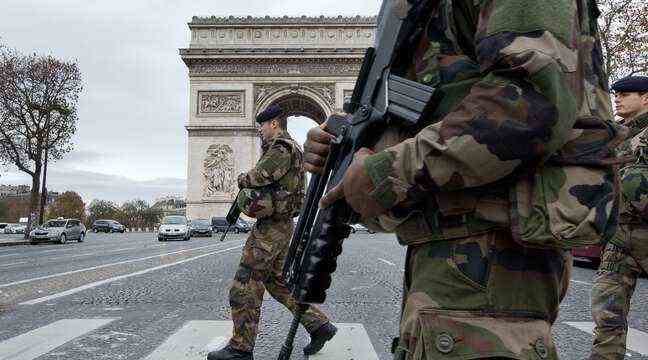At the end of the summer of 2015, experienced jihadist fighters left Syria and took the Balkan route, pretending to be refugees. Arrived in Hungary or Germany, they are taken care of by Salah Abdeslam who takes them to Belgium, where they hide in hideouts rented by the brothers Khalid and Ibrahim El Bakraoui, Mohamed Bakkali and Najim Laachraoui. A few weeks later, on November 13, the commando sows death in the streets of Paris and Saint-Denis in the name of Daesh. With the decline of the terrorist group, what specialists qualify as a “projected threat” has now “considerably diminished”, explains a security source, specifying however that it would be “irresponsible” to consider that it no longer exists.
In general, the Islamist terrorist threat remains high, as recalled by the latest attacks on the territory in recent months: six in 2020, one in 2021. But these attacks were not conceived and developed from the Iraqi zone. -syrian, as it had been the case between 2014 and 2016. Certainly, Daesh “does not make dream any more the young public” and its propaganda decreased lately, notes a well-informed source. But the number of radicalized people followed by the intelligence services remains very high, even if it has fallen for four years: 7,768 individuals were, at the end of June, registered with the FSPRT, against around 10,000 in 2017. In addition, 467 detainees convicted of terrorism were still behind bars last June, and 703 prisoners were being followed for radicalization.
In 2020, 120 detainees were released and are now monitored by the DGSI (General Directorate of Internal Security). This year, at least 59 more will be released from prison. “Some detainees, frustrated at not having been able to commit their act, may harbor a feeling of revenge,” warns a source close to the case.
Very different profiles
Over time, the terrorist threat has taken different forms. The specialists observe two which remain supported: the attacks “incited” by contacts still located in the former territories controlled by Daesh, and the “inspired” attacks, committed by individuals who lend a form of allegiance to a terrorist group.
The perpetrators of the last attacks in France had very different profiles. The motivations of the assailant in rue Nicolas Appert – in front of the former premises of Charlie-Hebdo – were religious, while that of the terrorist from Colombes were more political, the latter accusing France of being close to Israel. The man who stabbed a policewoman in Rambouillet was depressed, the Sudanese refugee who killed two people in Roman-sur-Isère suffered from psychological problems.
The detection of these individuals, who had passed under the radar of the intelligence services, is made difficult by their isolation and the fact that they limit their exchanges. Often unstable, they can tip over in just a few hours. “They are more isolated, more autonomous individuals, unrelated to terrorist organizations but who, under the effect of propaganda, decide to take action”, summed up the director of the DGSI, Nicolas Lerner, during ‘a press point.
Their hatred is exacerbated by proselytizing speeches which, especially for the past three years, have designated France as an enemy of Islam, and by the propaganda videos of terrorist groups which continue to circulate on the Internet despite everything. “It is the meeting of an atmosphere of hostility towards the State and the profiles of individuals permeable and receptive to this type of speech”, analyzes a source close to the intelligence services.
A car, a knife… The operating mode is often very simple and does not require the purchase, on the black market, of weapons of war. Which makes their detection complicated.
“The risk of exfiltration is not neutral”
Even if the risk is lower, the intelligence services do not rule out that terrorists may be thrown back into France to carry out an attack. Although around 400 nationals are considered dead in the Iraqi-Syrian zone and 300 others have vanished without leaving a trace, there remain terrorist groups which resist and have not given up on hitting the West. Among them is a contingent of French who have chosen not to surrender, believe the intelligence services.
In the camps, there are also 200 adults and 300 minors. “The risk of exfiltration is not neutral,” says an intelligence man. Finally, the French services are attentive to the turn of events in other conflict zones, in particular Afghanistan with the return to power of the Taliban, or the Sahelian zone.

